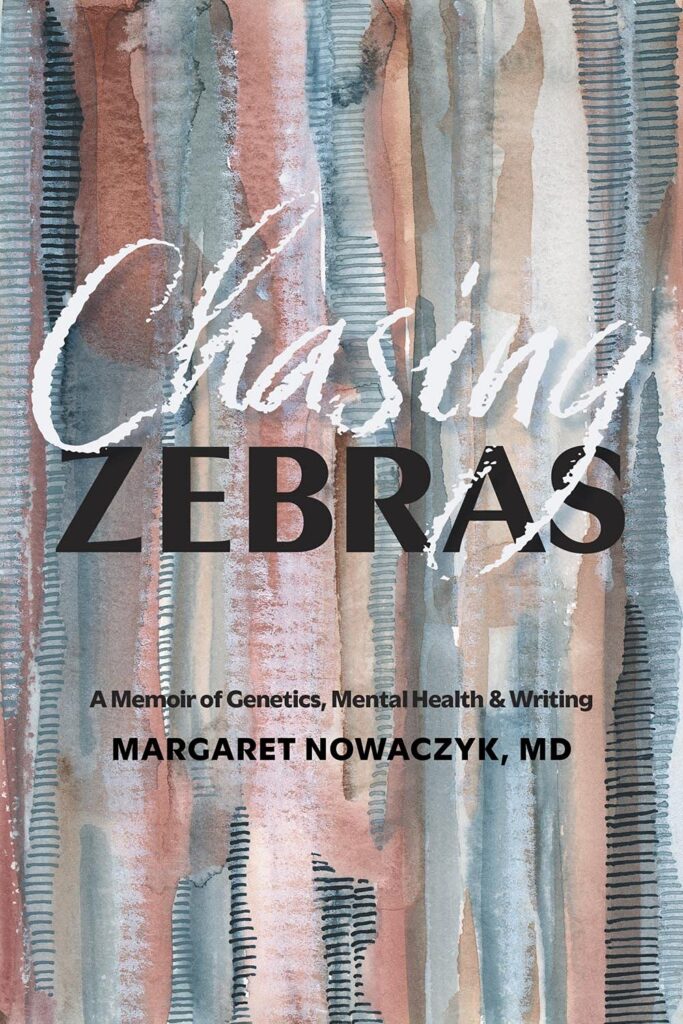In our bones: Exploring where memories begin

Are human beings born with memories? A new collection of essays by pediatric clinical geneticist Margaret Nowaczyk probes her fascination with the mystery of inherited awareness – what she calls marrow memory.
On a dreary afternoon more than two decades ago, Margaret Nowaczyk received the flimsy airmail envelope that would help her trace the lineage of 11 generations of her mother’s family. Inside was her grandmother’s death certificate, scrawled with the name of an unfamiliar place — Horyniec. It’s here, in this small village in southeastern Poland, that Marrow Memory: Essays of Discovery, Nowaczyk’s second book with local publisher Wolsak and Wynn, begins.
In “Marrow Memory” the collection’s eponymous essay, Nowaczyk, who is a pediatric clinical geneticist and a professor at McMaster University and DeGroote School of Medicine, travels to Horyniec with her young sons during a month-long tour of Poland, where she was born.
“The fragrance of the hay drying in heaps as tall as a house wafts by and a sensation arises somewhere between my gut and my heart — I know this meadow, this brook, these storks. But how can I?” writes Nowaczyk, a skeptic and a scientist. “Have I inherited awareness of this place from my ancestors?” she asks herself.
Research has shown that DNA, something Nowaczyk knows a lot about as a geneticist, can be modified as a result of lived experiences. As a scientist, she likes the theory that bathed in happy hormones, her genes have been marked with the spirit of Horyniec. In fact, she’s coined a term — marrow memory — to explain it.
“Muscle memory is something that we develop by repeated actions, like riding a bike. We get on a bike, and the muscles know what to do,” says Nowaczyk over coffee at Mikel Coffee, a favourite spot in Westdale. “This is not what I was thinking about. I was thinking about something very innate, that in some ways we’re born with,” adding that the term draws from existing ideas of epigenetics and generational memory.
“I coined this term because marrow comes from the innermost tissue in the embryo.”

In Marrow Memory: Essays of Discovery, Nowaczyk invites readers to marvel in the unexpected beauty of human experience and the ability of language to capture it. Through sharp, candid essays, she introduces readers to the radio dramas of her childhood in communist Poland, her fascinating work as a pediatric clinical geneticist, and her tenacious sleuthing as a genealogist.
Nowaczyk’s first book with Wolsak and Wynn, Chasing Zebras: A Memoir of Genetics, Mental Health and Writing, was published in 2021, exploring her journey from Poland to enduring the demands of medical school and living with a long-undiagnosed mental illness. Previously, she published two books in Polish: Searching for Ancestors and Your Family Tree of Health.
Nowaczyk was bitten by what she calls the genealogy bug during her maternity leave with her second son.
“Every time you find the name of an ancestor, you pull them from nonexistence,” she says excitedly. “Maybe it’s in the marrow, but finding them resonates with you. I have never met these people and I never will. But something in them is in me, right? Their genes are in me, that’s for sure. It’s almost a somatic and bodily experience finding them,” she says.
One particular ancestor “got her hooks in my imagination,” says Nowaczyk, who pulls her great-great-grandmother Józefa from nonexistence in the book’s essay, “His Aunt Must Have Given Birth to Him!” Here she traces Józefa’s life through three marriages, many children, and her eventual death in 1891.
“I started thinking about her being illiterate, poor, indentured,” says Nowaczyk, who brings other family members to life in the pages of Marrow Memory. Her mother Krysia was born in a church cellar during the bombing raid that began Hitler’s invasion of the Soviet Union in June 1941. Her father was the youngest of six children who never would have attended university in the 1960s without the help of government scholarships, paving the way for Nowaczyk’s career as a doctor and professor.
“In Poland, genealogy has always been the purview of the aristocracy and landed gentry, descendants of knights, princes and feudal landowners, and the historians studying them,” writes Nowaczyk, adding that members of lower classes may remember the names of their grandparents, but those of their great-grandparents remain largely forgotten. “Peasant family trees are stunted; they have many branches, but they break off abruptly after only two or three divisions,” she writes.
Marrow Memory is a composite of things that delight and preoccupy Nowaczyk, the thrill of adding new names to her family tree among them. Other obsessions and influences include her fascination with the mystery of memory, how we react to and interpret it, and its underlying molecular changes, as well as her preoccupation with the naming of natural phenomena in unrelated languages and with the feminist intersection of the personal and the political. The essays “reflect the unadulterated workings of my mind, the marrow of my being,” she writes.
CHECK OUT OUR BEHIND-THE-SCENES VIDEO!
“Margaret is exceptional in her ability to write about scientific topics in a way that draws the reader in, without ever feeling like she’s over simplifying,” says Noelle Allen, the publisher at Wolsak and Wynn who also edited the collection. “You can see her intense curiosity and dry humour throughout the book, but it particularly shines when she’s opening up scientific topics for the reader,” she adds.
Nowaczyk, whose family left Poland in 1980 and arrived in Canada a year later, has lived in Hamilton for 27 years, where she now lives with her husband and two sons.
“I have some really good writing friends here,” she says. “Everybody is wonderful, welcoming and supportive,” she says, adding that she always wanted to be a writer, but did nothing about it for a long time. “Or rather, I sublimated the writing desire into medical writing, research papers, and medical articles,” she says. “Then, in 2006, I was hospitalized for serious depression, and after that, I decided that maybe it’s time to start taking creative writing courses.”
She went on to do her MFA in creative writing at the University of British Columbia.

When asked if there are any topics that are difficult to write about, Nowaczyk says that writing about her own mental health has never been a challenge.
“I think people find things difficult to write about when shame is involved, and I was never ashamed of my diagnosis … There’s stigma attached to mental health, and I don’t share it. It's biology; it's biochemistry. This is just the way my body works,” she says. “I actually felt that it was important to share my story for the sake of education and for the sake of lifting the stigma.”
Marrow Memory employs several essay forms, including a braided essay, which brings together chemistry and personal history, and a hermit crab essay, a form that borrows the structure of another type of document or genre to tell its story.
“There are many different forms of essays, just like there are many different forms of poems,” says Nowaczyk.
She writes at a large table at home where she’s able to spread out her work. “Even though my computer’s there, I always write longform first. I always write with a fountain pen on scrap paper,” she says.
Nowaczyk fits in writing when she can — sometimes in the morning, sometimes at night, and sometimes in between her many other duties in a busy career. She enjoys the process of writing shorter pieces.
“You can really pay attention to the craft of writing, which can be hard to sustain over a 300-page memoir,” she says.
“When it comes to writing, I’m a sprint writer not a long-distance writer,” she says.
Smaller essays are not so overwhelming when it comes to revisions.
“You can work on the word choices, the style, and the syntax. You can really, really polish and chisel an essay.”
Tightly interwoven and interconnected like the cells of the bone marrow, the essays in Marrow Memory blend together into what Nowaczyk calls “a cohesive, living whole.” It’s an exceptional collection that skilfully brings together art and science, illuminating the profound connections between genetics and personal history. While reading each thoughtfully crafted essay, one can’t help but wonder how their own marrow memory might hold traces of ancestors and their forgotten stories.














